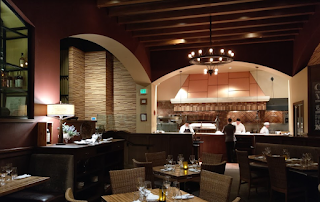Los Angeles, California's best restaurants
The Café de Paris, on the Boulevard des Italiens, was the first of numerous eateries in Paris and somewhere else that have worked under this name. Other most loved eating places were the Rocher de Cancale, on the mourn Montorgueil, renowned for its clams and fish, and the Restaurant Durand, at the side of the Place de la Madeleine and the regret Royale, a most loved assembling spot of government officials, specialists, and journalists, including the creators Anatole France and Émile Zola.
The most distinguished of all nineteenth century Paris eateries was the Café Anglais, on the Boulevard des Italiens at the edge of the lament Marivaux, where the gourmet specialist, Adolphe Dugléré, made exemplary dishes like sole Dugléré (filets poached with tomatoes and presented with a cream sauce having a fish stock base) and the popular tawny soup potage Germiny. On June 7, 1867, the Café Anglais served the now-well known "Three Emperors Dinner" for three regal visitors visiting Paris to go to the Universal Exposition restaurants. The coffee shops included Tsar Alexander II of Russia; his child the tsarevich (later the tsar Alexander III); and King William I of Prussia, later the primary head of Germany. The dinner included soufflés with creamed chicken (à la reine), filets of sole, escalloped turbot, chicken à la portugaise (cooked with tomatoes, onions, and garlic), lobster à la parisienne (round, level emblems coated with a gelatin-mayonnaise combination and intricately finished), ducklings à la rouennaise (the cadavers loaded down with liver and squeezed, introduced on a platter with boned cuts of the bosom and the barbecued legs, and presented with a red wine sauce containing pureed liver), ortolans (little game birds) on toast in Los Angeles.
Albeit the Café Anglais shut in 1913, while the structure was annihilated, the table setting for this supper is currently shown at La Tour d'Argent, the most established enduring eatery in Paris.
Around the finish of the nineteenth 100 years, in the bombastic and excessive period known as la beauty époque, the rich Maxim's, on the regret Royale, turned into the social and culinary focus of Paris. The café briefly declined after World War I however recuperated under new administration, to turn into an exceptional gastronomic sanctuary.
France delivered large numbers of the world's best gourmet specialists, including Georges-Auguste Escoffier, who coordinated the kitchens for the lavish inns claimed by César Ritz, fostering the purported unit de cooking, or kitchen group, comprising of exceptionally prepared specialists each with plainly characterized obligations. These groups incorporated a culinary specialist, or gros hat, responsible for the kitchen; a sauce cook, or delegate; an entremettier, accountable for planning of soups, vegetables, and sweet courses; a rôtisseur to get ready meals and broiled or barbecued meats; and the garde trough, accountable for all provisions and cold dishes. In Escoffier's time, the obligations and obligations of every functionary were forcefully characterized, however in present day times, rising work costs and the requirement for quicker administration have separated such inflexibly characterized obligations. In the kitchens of even the main present day cafés, obligations at the pinnacle of the supper hour arrangements are probably going to cover generally, with productivity kept up with in the midst of appearing disarray and disarray.
French cafés in the twentieth 100 years
In the twentieth 100 years, with the advancement of the vehicle, country eating became famous in France, and various fine common eateries were laid out. The Restaurant de la Pyramide, in Vienne, viewed by quite a few people as the world's best café, was established by Fernand Point and after his passing, in 1955, held its elevated status under the bearing of his widow, Madame ("Mado") Point. https://menukat.com/ca/los-angeles




Comments
Post a Comment